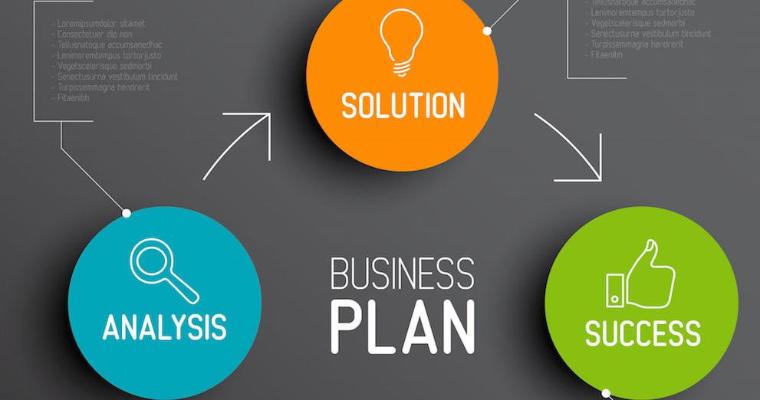How to plan chain sales and why is it needed?
Planning is an important and necessary component of effective management. Today, in a crisis, this function of management cannot be neglected. Of course, the uncertainty in which modern retail operates significantly complicates the planning process and requires clear approaches and the involvement of artificial intelligence (AI).

Important!The impact of KPI planning on chain performance cannot be overestimated:
- A well-formed plan increases sales by 45%.
- Clear generated goals and deadlines increase staff motivation and productivity by 35%.
- Understanding your weaknesses before developing plans allows you to minimize sales losses by 60%.
Chain planning: a step-by-step guide
We offer several steps to start the sales planning process in your business.

Step 1: Setting Chain Goals
Success in retail depends on the right goals. Therefore, you should determine what you want and can get based on the size of the market, the skills of your team, and the resources available.
For this you need:
- To study the market and its development trends (forecasted changes in demand, the behavior of competitors, political and social factors).
- Identify and evaluate your opportunities, limitations, threats, weaknesses, and strengths (SWOT analysis).
- Select the main indicators characterizing the success of the chain: Profit, Average receipt, Sales Value, Margin, etc.
- Research previous experience (2+ years), studying the dynamics of sales and the reasons for the changes in detail.
- Analyze the available resources of your business: staff, trade area, product assortment, etc.
Note! Remember that your goals should be built according to the SMART principle:
- S - Specific;
- M - Measurable;
- A - Achievable;
- R - Realistic;
- T - Timed.
To organize teamwork, goals should be fixed in one place: a board, special programs for managing teams/projects, etc.
Step 2: Selecting Sales metrics (KPI)
In the planning process, it is important to determine in advance the metrics by which planning will be carried out. These should be the metrics that most fully characterize the performance of your business:
- Sales Value: Sales Qty and Sales Value
- Profit or Margin
- Number of clients: permanent and new
- Average receipt
- Product turnover ratio: Inventory turnover ratio and Days sales in inventory
Note! Further planning of these indicators can be carried out:
- bottom-up - from the indicators of individual stores (category managers) to the chain sales metrics;
- from top to bottom - from chain metrics to individual store metrics (category managers).

Step 3: Selecting a Sales Planning Technique
Today, there are many methods for calculating planned metrics, so it is very important to choose the one that will be most adapted to your business and today's realities.
Using the Business Intelligence analytics platform, you can set up a sales planning process without effort.
Its functionality allows:
- to automatically calculate sales plans according to the main metrics, taking into account existing trends and seasonality;
- to calculate plans, use Machine Learning (LightGBM model), which provides the most accurate calculations;
- to detail sales plans by categories, stores, and category managers;
- edit planned values for individual characteristics.
Step 4: Collection and evaluation of historical data
Once you have decided on the planning tools, you need to collect relevant data for a long period. All this can be done automatically on the Business Intelligence platform. Here, all indicators are systematized in the context:
- stores;
- categories;
- products;
- category managers.
This allows you to generate real plans that take into account all the features and trends of your business.
Note! The data should be analyzed at the following intervals:
- The minimum period for collecting information for an existing chain is the last 8months.
- The period for the new chain is 90 days (3 months).
Important! For a new store or product that does not have a sufficient number of working months (3 months), performance plans should be set based on your own experience and market research.

Step 5: Evaluate the implementation of the plan by target metrics
An important point in the planning process is monitoring the progress of the plans. Today, it is necessary to carry out not only a retrospective analysis, but also to assess how the goals set are being met within a month.
For this you need:
- Monitor the level of implementation of plans as of the current date, and not just at the end of the month:
Current Plan Complete % = Actual value of the metric / Plan * (Number of days from the beginning of the month / Number of days in the month * 100%
Example: The sales value plan for April is $12,000; on April 20, the sales value is $9,500.
Current Plan Complete % = 9,500 / (12,000 * 20/30) * 100% = 118.75%
- Evaluate the expected fulfillment of sales plans for prompt adjustment of actions and strategies:
Expected metric = Actual matric / Number of days since the beginning of the month * Number of days of the planned month
Expected completion of the plan,% = Expected metric / Plan metric * 100%
Example:The chain's profit from the beginning of the month as of September 22 was $ 4,000, and the profit plan for September is $ 6,500.
- Expected profit for September = 4,000 / 22 * 30 = $5454.5
- Expected completion of the profit plan, % = 5454.5 / 6500*100 = 83.92%
- Detect weaknesses in time: categories, stores, and category managers.
- Constantly "keep your finger on the pulse", forming ratings of stores, categories, and products by the percentage of the sales plan completions.
This is where the Business Intelligence platform can help you.

Conclusion
Don't forget that your sales plan is a "sensitive" tool that needs to be adjusted regularly to keep up with new market trends, marketing campaigns, features, or even employees.
!Important:
- Review plans from time to time to check if they are close to reality. The viewing frequency you can set taking into account your business characteristic.
- Organize regular meetings to discuss progress, identify and solve problems, coordinate work between teams, and share experiences of failures and successes.
- If necessary, adjust the planned values of sales indicators and inform the team about the changes.
Remember that having a step-by-step plan and a motivated team with clear guidelines will enable you to weather any crisis and continue to achieve your goals!
 What's new?
What's new?





 No credit card required
No credit card required